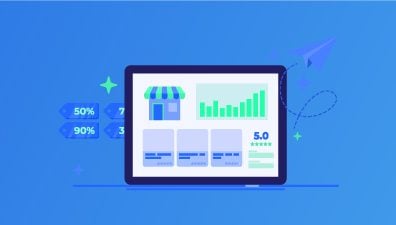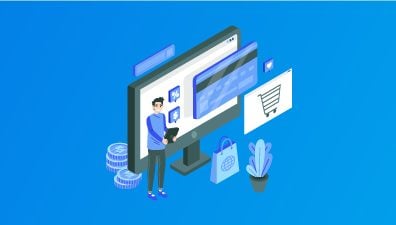In the ever-evolving digital landscape, businesses and organizations are constantly seeking ways to deliver exceptional and personalized digital experiences to their audiences. Traditional content management systems have long been the go-to solution for managing website content, but as the demand for multi-channel experiences and frontend flexibility grows, a new approach has emerged: the Headless CMS.
This article aims to explore the concept of what is Headless CMS, discussing its fundamental principles, benefits, and how it differs from traditional CMS systems. We delve into its workings, including the separation of backend and front-end, API-driven content delivery, content modeling and structure, and integration capabilities. Furthermore, we examine the factors to consider when choosing the right Headless CMS for your organization and highlight the scenarios where it can be most beneficial.
Table of Contents
What Is a Headless CMS System?
Headless Content Management System, is a modern approach to content management that decouples the frontend presentation layer from the backend content management functionality. Unlike traditional CMS platforms, which tightly integrate the content creation, storage, and delivery aspects into a single system, headless CMS separates these components, allowing for greater flexibility and scalability.
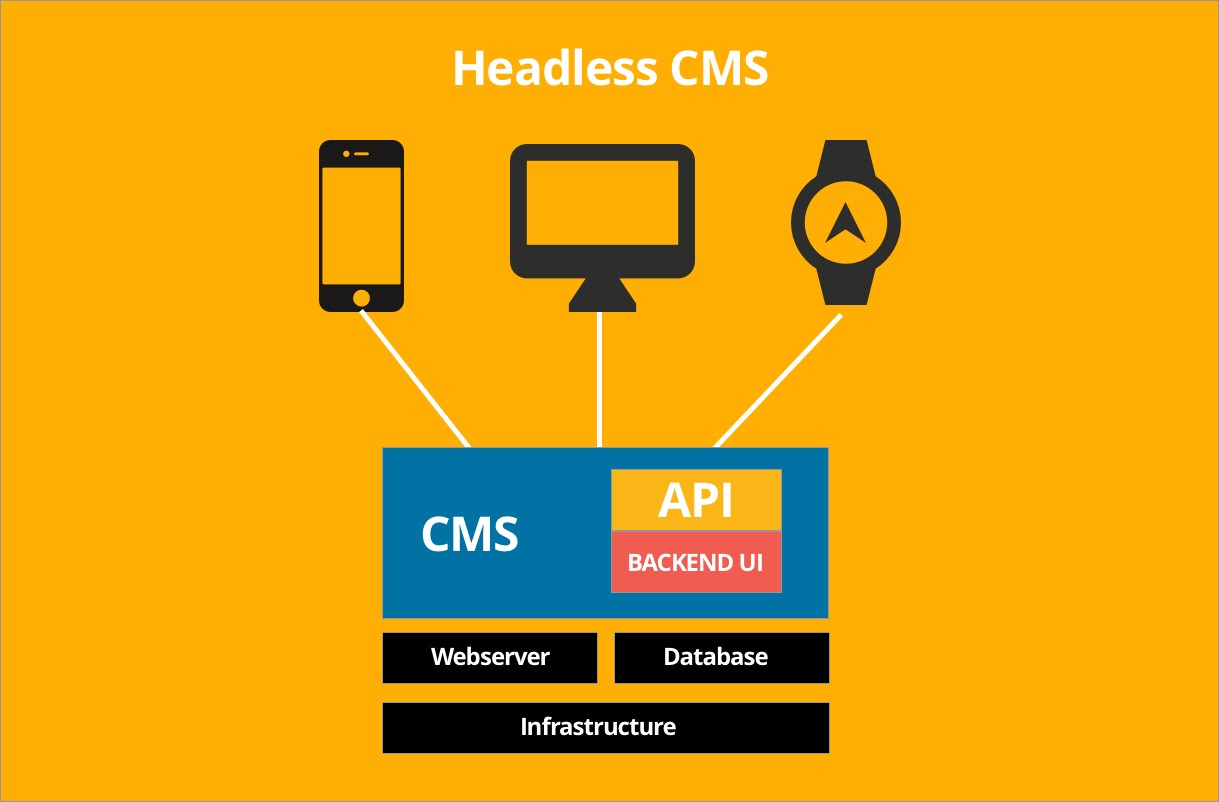
In a headless CMS architecture, the backend content management system serves as a repository for creating, organizing, and storing content. It provides an intuitive interface for content editors and administrators to manage the content, define its structure, and apply workflows. However, instead of delivering the content directly to a specific frontend presentation layer, a headless CMS exposes the content through APIs (Application Programming Interfaces).
The Key Differences Between Headless CMS vs Traditional CMS
Headless CMS and traditional CMS differ in their architectural approach and the way they handle content management and delivery.
Architecture
Traditional CMS platforms are built with a tightly coupled architecture, where the frontend presentation layer and the backend content management functionality are tightly integrated within a single system. The CMS handles both content creation and content delivery.
In contrast, Headless CMS follows a decoupled architecture, separating the backend content management system from the frontend presentation layer. The CMS is responsible for content creation, storage, and organization, while the delivery of content is handled through APIs, allowing developers to build custom frontend experiences.
Content Delivery
In a traditional CMS, the content is delivered directly to predefined templates or themes, which dictate how the content will be displayed on the front end. The CMS often provides built-in themes or templates that content editors can choose from.
With a headless CMS, the content is delivered through APIs, which provide structured data to be consumed by any front-end or channel. Developers have the freedom to build custom front-end experiences using the technologies and frameworks of their choice.
Flexibility and Scalability
Traditional CMS platforms provide a pre-defined set of templates and themes, limiting the flexibility of the front-end design. Making significant changes or integrating new technologies can be challenging. Scaling the system may also be determined by the CMS’s architecture.
Headless CMS offers greater flexibility and scalability. Developers can implement any frontend technology stack, design custom interfaces, and adapt the presentation layer to fit specific requirements. It allows for easier integration with new platforms, devices, or emerging technologies.
Multi-Channel Content Delivery
Traditional CMS platforms are typically optimized for delivering content to a specific channel, such as a website. Repurposing the same content for multiple channels requires additional customization and development.
Headless CMS excels in multi-channel content delivery. The content is delivered through APIs, enabling organizations to distribute content across various channels, including websites, mobile apps, IoT devices, digital signage, and more, without the need for extensive modifications.
Content Management Workflow
Traditional CMS platforms provide an integrated interface for content editors and administrators to manage content creation, organization, and publication. The workflow is tightly connected to the CMS’s backend functionality.
Headless CMS platforms still offer content management capabilities, allowing content editors to create, organize, and publish content. However, the content management interface is decoupled from the frontend presentation layer, providing more flexibility for content editors and developers to collaborate on content management processes.
How Does Headless CMS Work?
Content stored in a headless CMS is distributed through APIs, allowing it to be effortlessly showcased on any website, device, or digital touchpoint. This grants the content in a headless CMS the advantage of being highly reusable, regardless of the current omnichannel customer experience or any future emerging channels. This stands in contrast to platforms like WordPress and other monolithic CMSes that tightly bind the front-end and back-end together, imposing restrictions on how content can be presented and limiting flexibility.
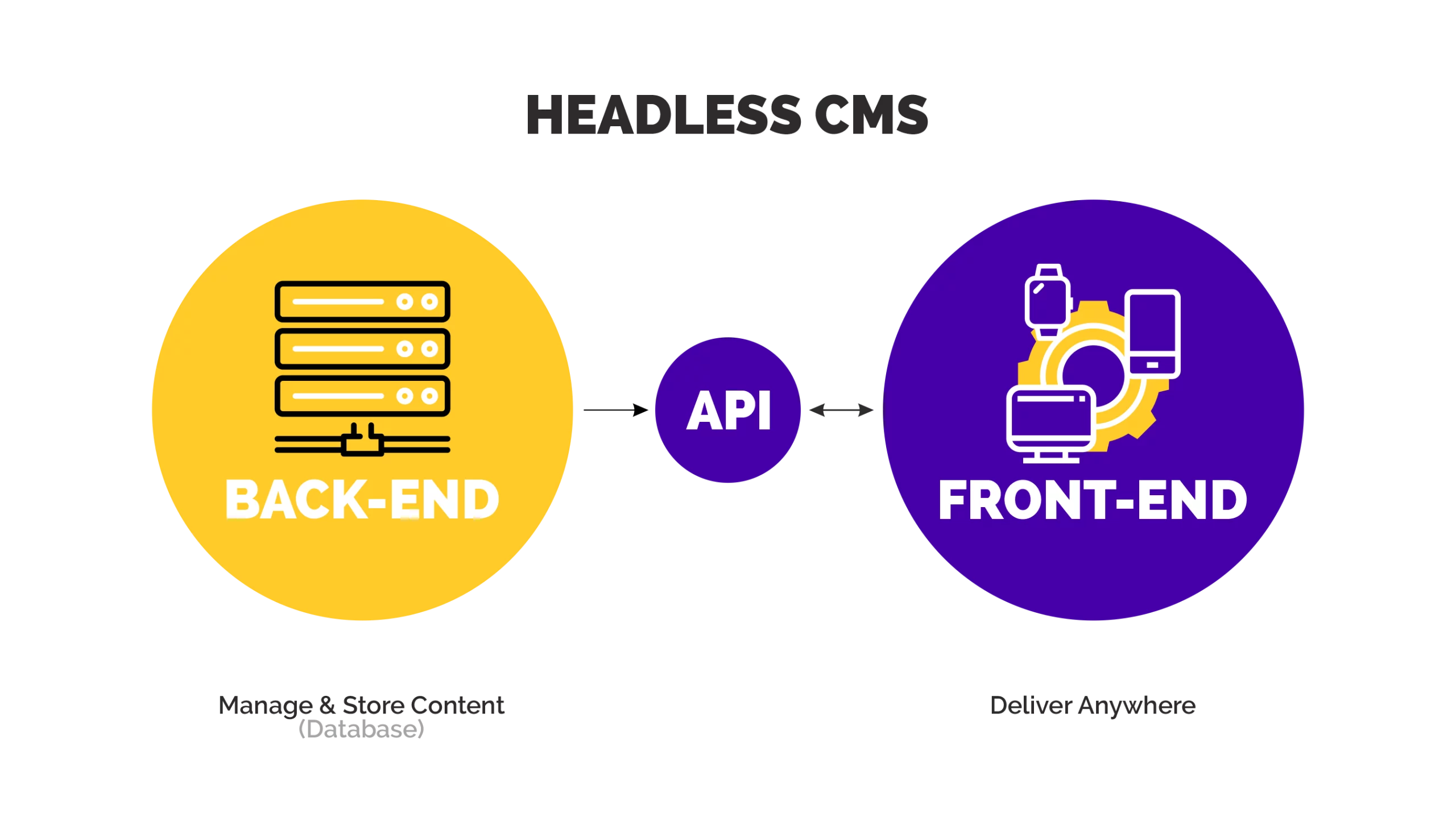
Headless CMS operates through the separation of backend and frontend components, API-driven content delivery, content modeling and structure, and integration with various platforms and technologies. Let’s explore each aspect in detail:
Separation of Backend and Frontend
Headless CMS separates the backend content management system from the frontend presentation layer. The backend system focuses solely on content creation, organization, and storage, while the frontend development can be implemented independently using any technology stack or framework.
API-Driven Content Delivery
Headless CMS utilizes APIs to transmit content to the front-end. The CMS exposes content through APIs, allowing developers to fetch specific content items or collections based on their needs. This API-driven approach enables content to be retrieved in a structured format, such as JSON or XML, and consumed by various frontend technologies or devices.
Content Modeling and Structure
Headless CMS platforms offer content modeling and structure capabilities. Content editors or administrators can define custom content models, specifying the fields, data types, and relationships for different content types. This allows for a structured approach to content management and ensures consistency in content organization. Content models facilitate efficient content retrieval and presentation on the front end.
Integration of Many Platforms and Technologies
The platforms are designed to integrate with diverse platforms, technologies, and frameworks. The decoupled nature of headless CMS enables developers to leverage their preferred frontend technologies, such as React, Angular, or Vue.js, and connect them to the CMS through APIs. Additionally, headless CMS platforms often provide software development kits (SDKs) or libraries to simplify the integration process.
Furthermore, headless CMS can integrate with third-party services and systems such as eCommerce platforms, marketing automation tools, analytics platforms, or social media channels. This allows organizations to extend the functionality of their CMS and leverage additional services while maintaining a centralized content management hub.
Headless CMS Pricing
The pricing of headless CMS solutions can vary depending on factors such as the provider, features included, usage levels, and additional services. Here are some common pricing models for headless CMS:
Subscription-based Pricing
Many headless CMS providers offer subscription-based pricing, where you pay a recurring fee based on factors like the number of users, content items, or API requests. The pricing tiers often scale based on the size and needs of your organization, with higher tiers offering more advanced features and support.
Usage-based Pricing
Some platforms charge based on usages, such as the number of API requests, storage usage, or bandwidth consumption. This model allows for more flexibility, as you only pay for what you use. It can be advantageous for organizations with fluctuating content needs or unpredictable traffic patterns.
Enterprise/Custom Pricing
For larger enterprises or organizations with specific requirements, some providers offer custom pricing options. This pricing model takes into account factors like the scale of the organization, customizations needed, integration requirements, and additional support or services.
Open Source/Community Edition
There are also open-source options available that are free to use. These community editions often come with basic features and support but may require technical expertise for setup, customization, and ongoing maintenance.

It’s important to carefully review the pricing structures and terms of each headless CMS provider to ensure they align with your budget and requirements. Consider factors such as the scalability of pricing plans, any potential additional costs (such as for advanced features or support), and the level of customer support provided. It can be helpful to reach out to the CMS providers directly to get detailed pricing information and discuss any specific needs or customization options that may impact the overall cost.
- Scalability of Pricing Plans: Determine whether the pricing plans offered by the CMS provider are scalable and can accommodate your organization’s growth. As your content needs expand, it is important to have a pricing model that can adapt to higher usage levels without incurring excessive costs.
- Additional Costs: Take into account any potential additional costs beyond the base subscription fee. Some headless CMS providers may charge extra for advanced features, integrations with other platforms, or specialized support services. Carefully evaluate these costs to ensure they fit within your budget and align with your specific needs.
- Customer Support: Assess the level of customer support provided by the CMS provider. Consider factors such as response time, availability of technical assistance, and the extent of support documentation available. Reliable and responsive customer support can be invaluable when encountering issues or seeking guidance during the implementation and usage of the headless CMS.
- Direct Communication: It is highly recommended to reach out directly to the CMS providers to obtain detailed pricing information. Engage in discussions with their sales or support teams to clarify any uncertainties, inquire about customization options, and address specific needs that may impact the overall cost. This direct interaction allows for a more accurate understanding of the pricing structure and potential negotiation opportunities.
Why Headless CMS and Do You Need One?
Traditional CMS systems like WordPress offer comfort and familiarity, making them a popular choice for simple websites that don’t require custom experiences. They provide templates that resemble generic websites and are suitable for those without technical resources.
However, the importance of a headless CMS becomes evident for organizations that need to deliver cross-platform experiences across multiple channels, especially on a global scale. With a headless CMS, you have complete control over content delivery, making it the preferred option for forward-thinking teams in fast-paced industries.

Unlike traditional CMS platforms that are tied to specific technologies like PHP and MySQL (as in the case of WordPress), a headless CMS allows you and your team to leverage preferred technologies such as React, Angular, Vue, and others. This flexibility enables you to build projects with your preferred tech stack.
If you don’t want to be limited to a specific technology stack, prefer not to be constrained by pre-defined templates and themes, and require additional functionality to distribute content to multiple platforms, investing in a headless CMS is worth considering. It provides the freedom and flexibility to tailor your digital experiences according to your unique requirements.
You Should Use a Headless CMS If:
- You have a variety of platforms and require a centralized content hub to gather data from.
- You possess front-end development resources to work with.
- You prefer to use your preferred languages and frameworks.
- You aim to implement projects based on JAMStack principles and maintain agility in your processes.
- Unique designs are necessary to showcase your content effectively.
- Your project involves multiple devices and languages.
- Content is frequently added or updated.
You May Not Need a Headless CMS If:
- If your content doesn’t require frequent updates.
- If your team lacks adequate internal development resources.
- If speed and scalability are not significant considerations for your projects.
Who Should Use Headless CMS?
Headless CMS is well-suited for a broad range of businesses and organizations that require efficient content management and distribution across multiple platforms and channels. Here are some examples of who can benefit from using a headless CMS:
Enterprises with Complex Digital Ecosystems
Large organizations operating across multiple channels and platforms may face challenges in managing content consistently. A headless CMS can serve as a centralized system for content management, ensuring consistency and efficiency across various channels.
Digital Agencies
Digital agencies that create custom websites and applications for their clients can leverage the flexibility and customization options offered by a headless CMS. It allows them to design and develop unique front-end experiences tailored to their client’s specific needs.
IoT and Connected Device Platforms
Headless CMS can be utilized to manage and deliver content to IoT devices and connected platforms, including smart home devices, wearables, and digital signage. It enables seamless content distribution across diverse devices and platforms.
Content Strategists
Headless CMS empowers content strategists to plan, generate, and distribute content across multiple channels and platforms. It provides control over content development and delivery, allows for effortless repurposing and reuse of content, and frees content strategists from technical concerns related to content distribution. This enables them to focus on creating high-quality content.
By utilizing a headless CMS, businesses, and organizations can streamline their content management processes, ensure consistent content delivery, and adapt to evolving digital landscapes with ease.
How to Choose the Right Headless CMS
Once you have determined whether headless CMS suits your organization, the next step is to find a system that fits your requirements. Understanding your needs is crucial in this process.
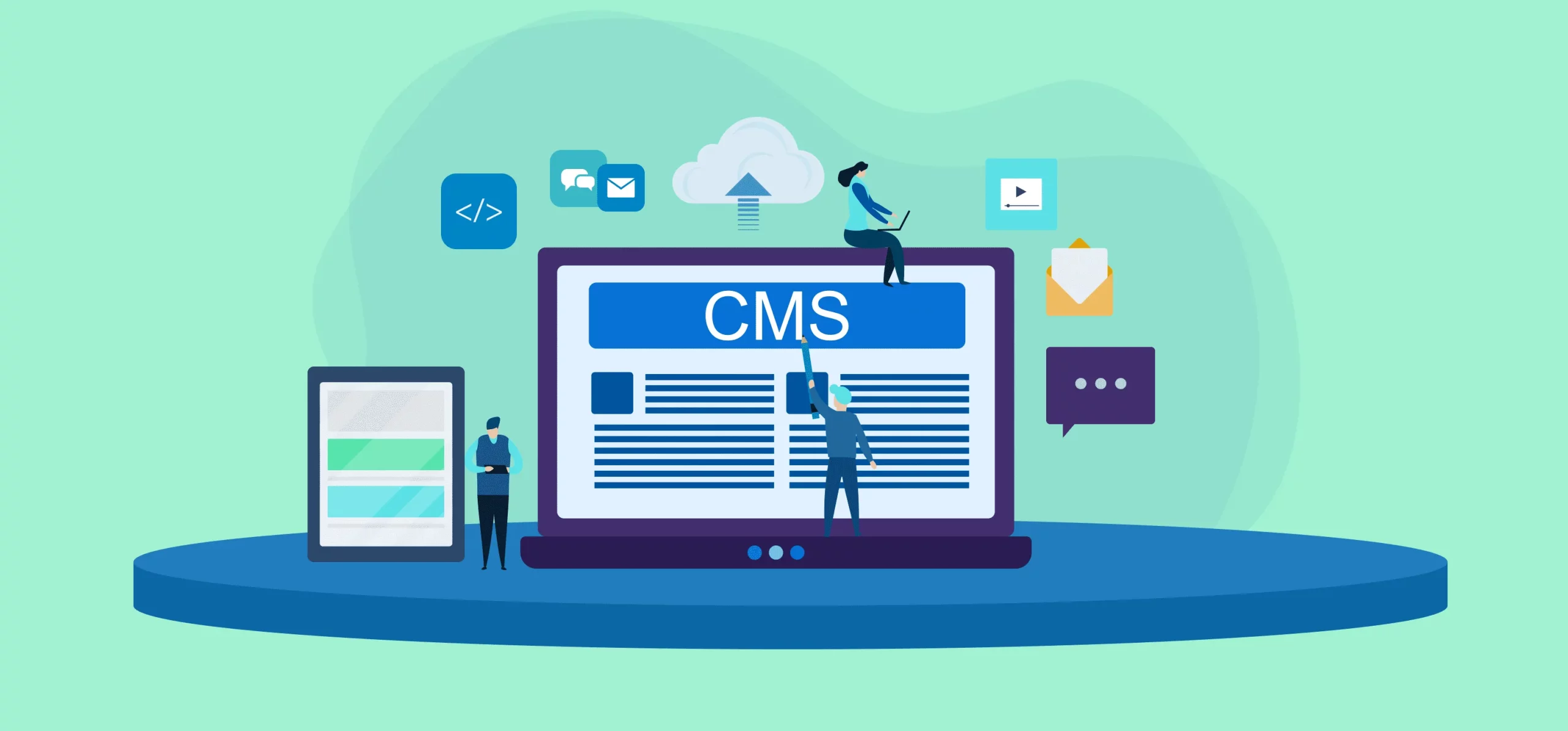
Create a list outlining the features and characteristics you are seeking in a system. With numerous providers available, even this simple step will assist you in identifying the qualities that will set your ideal headless CMS apart.
While many systems may offer similar features, it is essential to identify their points of differentiation. Consider asking the following questions:
- How adaptable is the system to my specific needs? Can I incorporate multiple content types and channels, and will there be any limitations in the future?
- How user-friendly is the system for all team members, including those with limited technical expertise?
- What measures does the headless CMS take to ensure the security of my data?
- What are the provider’s service level agreements (SLAs) and policies regarding resource upgrades?
Additionally, it is beneficial to leverage the resources provided by the CMS providers during the evaluation phase. For instance, many organizations publish case studies showcasing how their existing clients’ needs were met and challenges were resolved by a particular provider. Third-party reviews are equally valuable in gaining insights into the experiences of others.
Lastly, do not hesitate to reach out to any headless CMS provider that piques your interest. Contacting them directly is one of the most straightforward ways to obtain the information you seek. It will also give you a glimpse into the level of customer support you can anticipate in the future.
Demos can be immensely beneficial as they offer a hands-on experience, allowing you to interact with the system and gauge how well it aligns with your organization’s requirements. Similarly, free trials provide even more time to explore and experiment with the features and capabilities of the CMS.
Conclusion
Headless CMS offers a modern and flexible approach to content management and delivery. Decoupling the backend and frontend components empowers organizations to create engaging and personalized digital experiences across various platforms and channels. The separation of content from presentation allows for greater flexibility, enabling teams to work independently and leverage their preferred technologies.
Additionally, Headless CMS enables seamless integration with third-party systems, ensuring a unified and efficient digital ecosystem. While traditional CMS platforms still have their place, the growing demand for cross-platform experiences, scalability, and customization has made Headless CMS increasingly popular. As organizations strive to deliver content-rich experiences that can adapt to evolving technologies and user expectations, investing in a Headless CMS can provide the necessary foundation for success. Through our headless cms explained, whether you are a digital agency, enterprise, or content-driven organization, embracing a Headless CMS can unlock new possibilities, enhance efficiency, and empower you to deliver exceptional digital experiences in today’s fast-paced digital landscape.
If you need any further consultancy, please feel free to contact our specialists. Magenest has plenty of Magento developers, who have years of experience with this platform and the eCommerce market. With the comprehensive knowledge of headless technology, we are confident to provide the best solution to your business and boost your online presence to a new high level.


